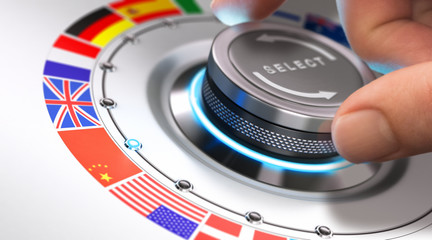As technology advances, more tasks and processes are becoming automated. Translation is one such task. But can real-time translation devices be relied upon?
Technology has helped make many aspects of life – and business – simpler and quicker. But in the quest for speed and simplicity we might be missing out on accuracy. So an we rely upon the devices and programs we employ to see the big picture and understand context? Because language is such a complex field, context is everything. An inappropriate word in a single sentence can change the tone of an entire conversation.
How do real-time translation devices work?
For a translation device to work, it requires input. Mostly this is done by deciphering speech via a microphone or text transcribed directly onto a device. Once it’s received its input, how does it go about the job of translating?
Let’s start with rule-based Machine Translation, a system built on the premise that a language is based on sets of grammatical and syntactic rules. The software involved requires a robust bilingual dictionary for its specified languages and meticulously outlined linguistic rules for the sentence structure of each language.
Statistical Machine Translation is built upon the premise of probabilities. From the source text the machine will identify possible target segments and select the translation with the highest statistical probability of being correct.
More recently, we’ve seen a switch towards Neural Machine Translation. NMT is what’s enable machine-generated translations to leap in accuracy and effectiveness over recent years, moving away from traditional phrase-based systems. With NMT the source language is encoded and then decoded into the desired output language via a neural network.
For these systems to work the system requires a matching pair of sentences in both languages, so researchers are now building systems that can translate without sentence pairings, i.e.: Unsupervised Neural Machine Translation (UNMT).
What are the benefits?
The primary benefit of real-time translation is the obvious one, it’s real-time. You get it instantly. There’s no need to send off documents and await a translation, simply scan them with your device and have your response within seconds.
You can use real-time translation devices on the go. Many real-time translation programs are based upon mobile devices, so wherever you go, as long as you have the device with you, you can get a translation.
If used regularly, real-time translation devices can be relatively low-cost. Once you’ve purchased the device itself and the software, there’s often no need for further financial outlay. Whilst the initial cost is often expensive, over an extended period of time it can prove cost effective.
With a real-time translation device, you get access to multiple languages. As long as the language has been translated by the service provider, you can have it. So there’s no need to source multiple translators for multiple languages. As long as you have the language loaded, your device can handle it.
What are the pitfalls?
So far, real-time translation devices sound great. They’re quick, mobile and can translate multiple languages. But things aren’t as great as they seem. Because whilst real-time translation devices are ideal for personal users, they’re not quite up to scratch for business users.
If you’re going on holiday and want to translate the odd phrase or public sign, a real-time translation device is more than adequate for your needs. It will translate common words and phrases perfectly well for those languages that it can match sentences. But ask it to do more than that and you may find it wanting. Which makes it unsuitable and unreliable for business purposes.
Businesses can’t risk conducting dialogue out of context. They need to know that words and phrases are not only understood but understood in terms of the matter at hand. Knowledge of idioms and cultural context is incredibly important when trying to build relationships and rapport.
When dealing with legal documentation and correspondence, ambiguity isn’t going to cut it. You can’t rely on getting the gist of what’s going on. You need to know with perfect clarity. A clarity that a real-time translation device cannot provide.
Ultimately, machines cannot be trusted for translation on their own. Within a business environment their work has to be checked by a professional translator to ensure complete accuracy.
For total reliability seek a professional translator
Real-time translation devices are continually improving. With smarter algorithms and better technology, they’re better than ever. But better, isn’t good enough. When the success of your business is at stake, it makes sense to turn to a professional translation service you can rely on.



